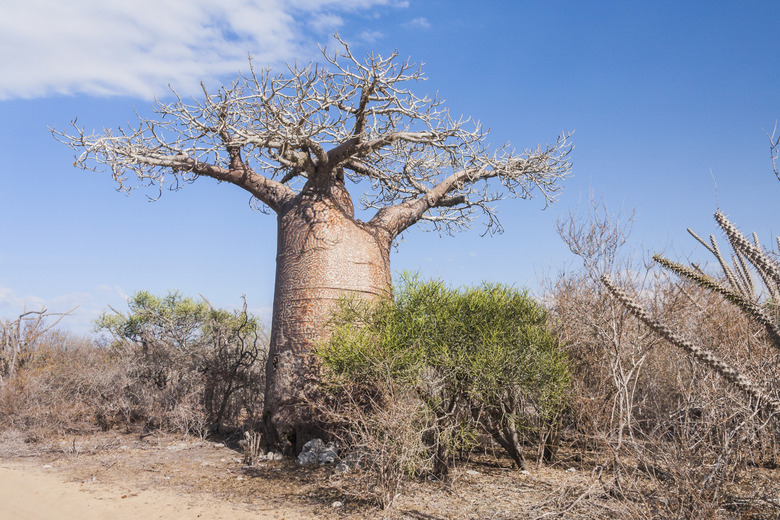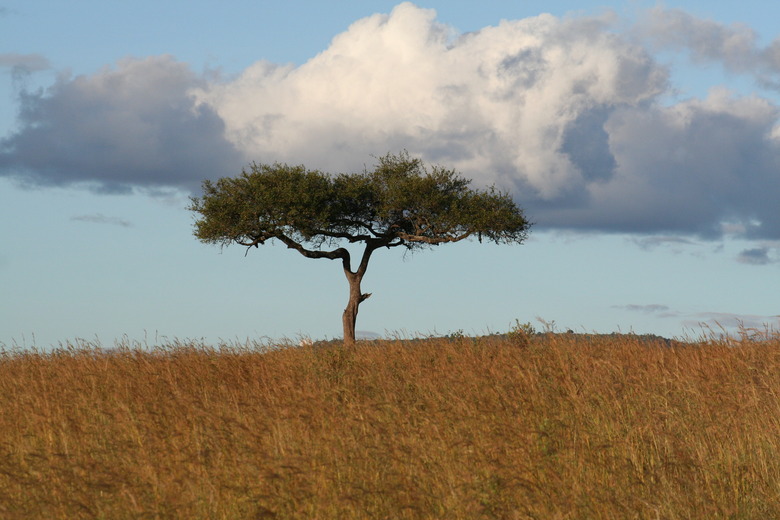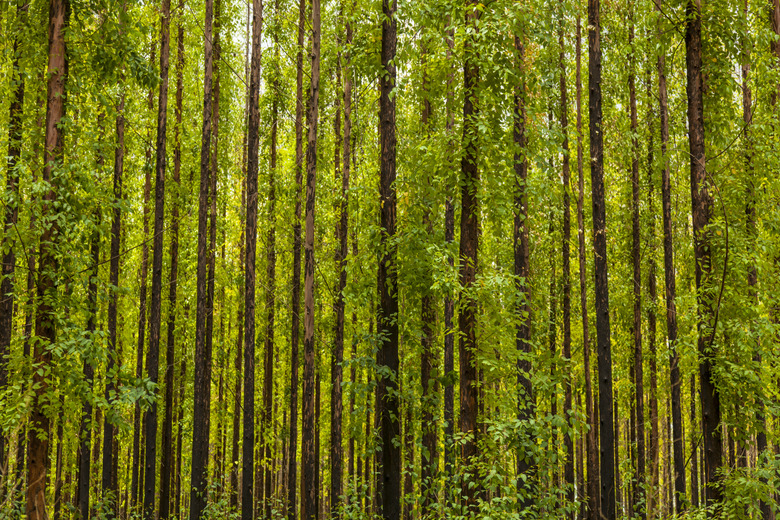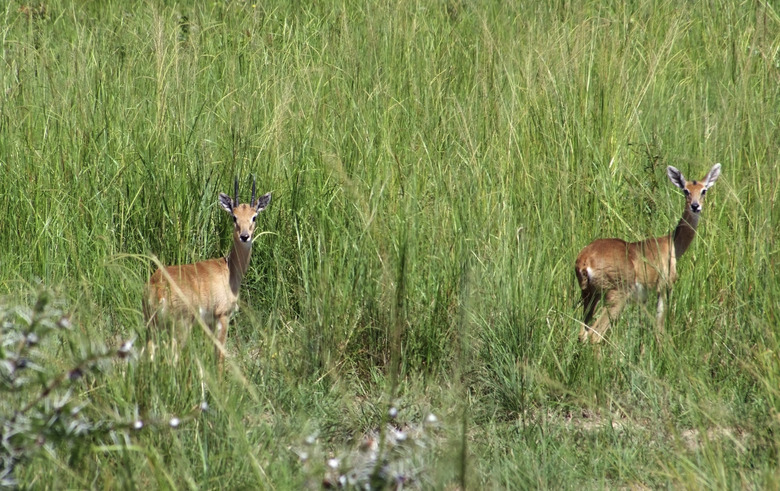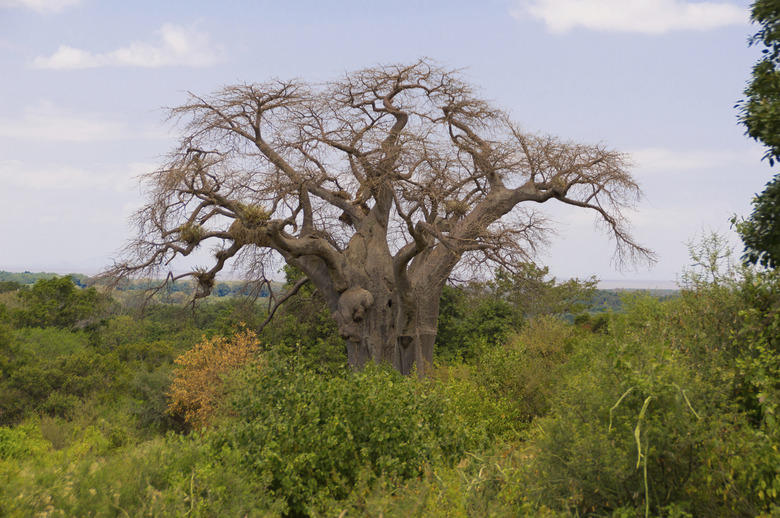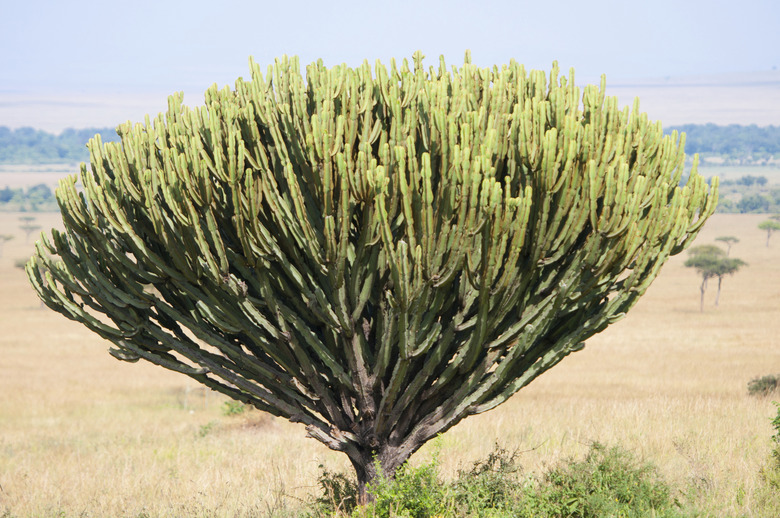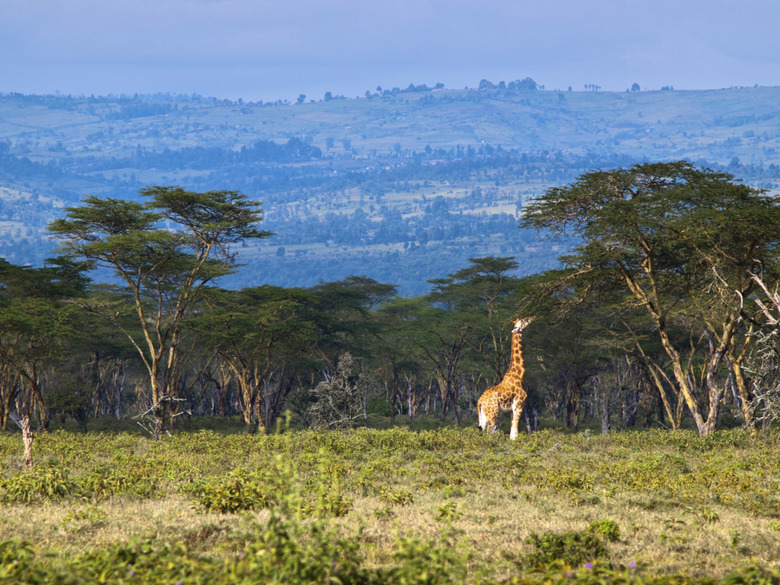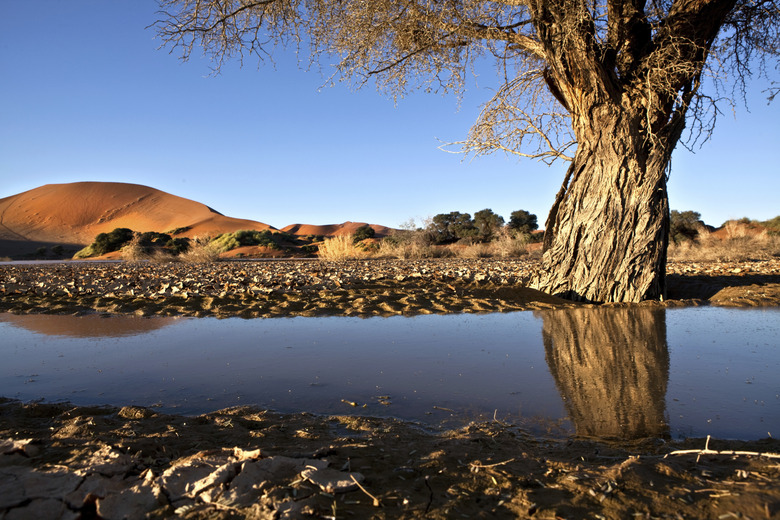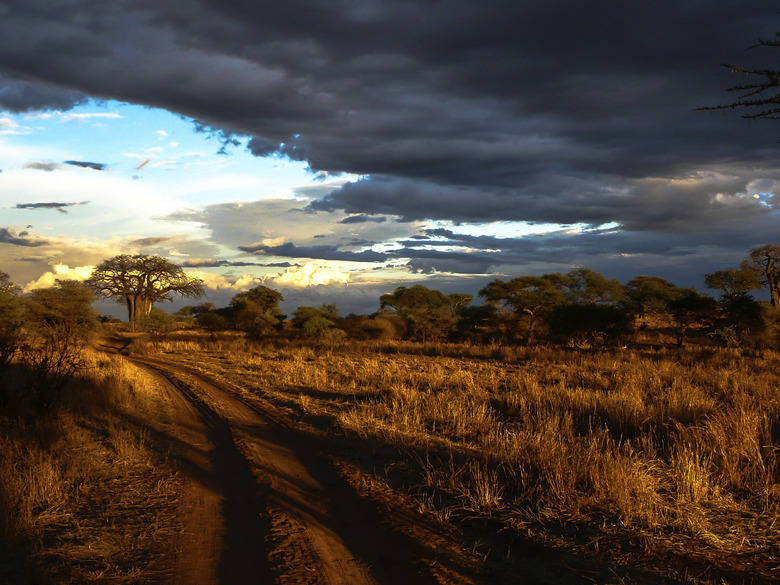Plants Of The Tropical Savanna
Tropical savannas, usually bordering tropical biomes, are rolling grasslands scattered with shrubs and isolated trees. Not enough rain falls on a savanna to support forests. Also called tropical grasslands, they are found in a wide band on either side of the equator. Large tropical savannas exist in Africa, Australia, Brazil, Columbia and Venezuela. Plants in tropical savannas have adapted an ability to store water from wet seasons for long stretches of drought.
Acacia Tree
Acacia Tree
The acacia tree (Acacia Senegal) also known as gum Arabic or Senegal gum, grows in African savannas. The acacia has thorny branches and grows up to 60 feet tall. It oozes a gumlike sap that is collected and marketed as an ingredient for skin inflammation and to treat sore throats, diarrhea and urinary and respiratory ailments.
Whistling thorn (Acacia dreparalobrium) is an African acacia tree that grows up to 18 feet tall, with branches studded with pairs of long thorns up to 3 inches long. Stinging ants dig holes into the thorns, turning them into shelters. Wind blowing across the holes in abandoned spines makes a whistling sound that gives the tree its name.
The African umbrella thorn acacia (Acacia tortillis) grows on rocky ground and in sand dunes. It grows up to 65 feet tall with a flat crown that gives it its name. It yields clusters of up to 400 white puffball flowers and has a taproot that can grow up to 115 feet deep.
Eucalyptus Trees
Eucalyptus Trees
Gum tree eucalyptus (Eucalyptus cinerea) is one of numerous species of eucalyptus trees that grow in Australia. They have a reddish-brown bark, grey-green leaves about 1 inch long and grow clusters of creamy white flowers. They have been introduced to Arizona, California and Nevada.
The jarrah tree (Eucalyptus marginata), also Australian, has a branchless trunk that grows from 130 to 160 feet tall. The jarrah sheds strips of its grayish-brown, grooved bark. It grows a special tuber underground that stores moisture and allows the tree to grow back after a fire. The hard wood from the jarrah is made into furniture, and bees that browse its clusters of white flowers make a delicious honey.
Grasses
Grasses
Bahama grass (Cynodon dactylon), a gray-green grass that spreads by underground stems and above-ground runners, is called Bermudagrass in the United States because it was introduced from Bermuda. It grows naturally in areas that have been subjected to grazing, fire or flooding.
Elephant grass (Pennistum purpureum) grows in dense clumps up to 10 feet tall in Africa and is used as fodder for animals. Elephant grass that was introduced to Florida has become invasive, clogging natural waterways.
Baobab Tree
Baobab Tree
The baobab tree (Adansonia digitata) can live for thousands of years and grow up to 80 feet tall. The baobab looks like it has its roots in the air and a trunk sticking into the ground. It stores water in its thick trunk in preparation for up to nine months of dry weather when it survives without leaves.
Candelabra Tree
Candelabra Tree
The candelabra trees (Euphorbia ingens) grows 30 to 40 feet tall; thorny branches near the top of its single trunk look like little cacti, giving the tree the appearance of a candelabra, hence its name. The white sap of the candelabra tree is toxic and can blister the skin or cause blindness if it touches the eyes.
Jakal Berry Tree
Jakal Berry Tree
The jackal berry tree (Diospyros mespiliformis) grows on termite mounds in Africa and along riverbeds and swamps. Most trees grow from 15 to 18 feet tall, although they can grow as high as 80 feet. They grow straight with deep grooves in their bark. Mature trees develop flattened ridges on their trunk that help buttress and support them; its purple fruit is a favorite of animals.
Manetti Tree
Manetti Tree
The African manketti tree (Schinziophyton rautanenii) has short, stubby branches on a straight trunk that grows from 50 to 65 feet tall. The Manketti tree has distinctive leaves in the shape of hands and sprays of small white flowers. It grows in wooded hills and sand dunes and has a deep tap root with short lateral roots.
River Bushwillow
River Bushwillow
The African river bushwillow (Combretum erythrophyllum) is also called the hiccup tree, because if the seeds are eaten, they cause hiccups. It grows from 30 to 35 feet tall topped by a dense, spreading crown. Its leaves turn yellow in early autumn, then red in the winter; the leaves drop during extended dry periods. It grows cream-colored or pale yellow flowers.
Cite This Article
MLA
Hoyt, Richard. "Plants Of The Tropical Savanna" sciencing.com, https://www.sciencing.com/plants-of-the-tropical-savanna-13427859/. 21 July 2017.
APA
Hoyt, Richard. (2017, July 21). Plants Of The Tropical Savanna. sciencing.com. Retrieved from https://www.sciencing.com/plants-of-the-tropical-savanna-13427859/
Chicago
Hoyt, Richard. Plants Of The Tropical Savanna last modified March 24, 2022. https://www.sciencing.com/plants-of-the-tropical-savanna-13427859/
